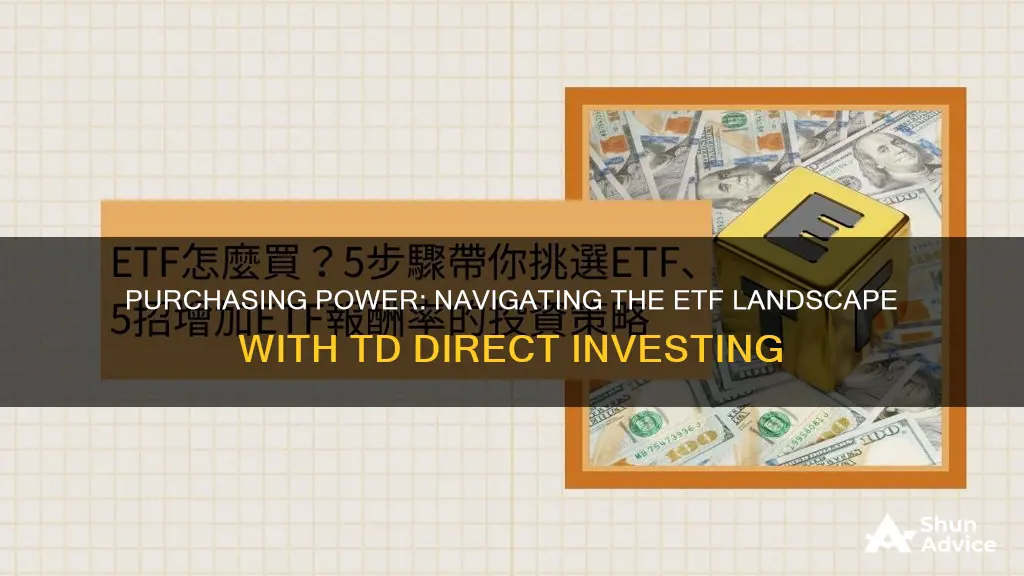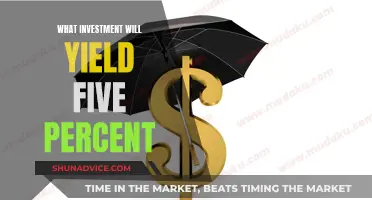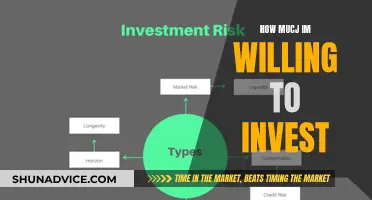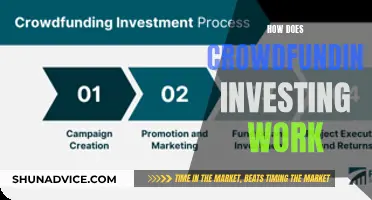
Exchange Traded Funds (ETFs) are a collection of stocks, bonds, and other assets traded on an exchange like stocks. ETFs can be purchased from a direct investing brokerage and can be either passive or active. Passive ETFs track the performance of a particular index, while active ETFs attempt to outperform a specific benchmark. ETFs can provide instant diversification to an investment portfolio and can be traded any time during the market day. When buying ETFs on TD Direct Investing, investors can use the WebBroker platform to identify top-performing ETFs and compare them based on various parameters.
| Characteristics | Values |
|---|---|
| Number of ETFs available | Over 3,000 |
| ETF types | Sector Tracking, Index, International, Developed Market, Country Specific, Thematic, Commodity and Currency, Complex |
| ETF advantages | Instant diversification, real-time view of price, traded any time, cost-effective, simple way to get into the market |
| ETF disadvantages | Price may fall, may be more costly than buying investments separately, management expense ratio (MER) fee, sales taxes, independent review committee (IRC) fees, brokerage commissions |
| How to buy ETFs | Select the TD Direct Investing account, transfer funds into your account, start investing |
| Account types | Cash, margin, RSP, TFSA |
| Customer support | Monday to Friday, 7 am to 10 pm ET |
| Contact number | 1-800-465-5463 |
What You'll Learn

Understanding the differences between ETFs and index funds
Exchange-Traded Funds (ETFs) and index funds are both popular investment options for those looking to build a diversified portfolio. They are similar in many ways, but there are some key differences to note. Here are some of the main differences between ETFs and index funds:
Trading Flexibility: ETFs offer more flexibility in terms of trading as they can be bought and sold on the open market at any point during the trading day, similar to stocks. On the other hand, index funds are typically bought and sold at a set price at the end of the trading day. This means that ETFs provide investors with more control over the price they pay for their investments.
Minimum Investment: ETFs generally have a lower minimum investment threshold than index funds. The minimum investment for ETFs is usually the cost of a single unit, while index funds often have higher minimum investment requirements. This makes ETFs more accessible to investors with a smaller amount of capital.
Tax Efficiency: ETFs are considered more tax-efficient than index funds due to their structure. When selling an ETF, the transaction occurs on the open market, and the purchase is made directly by another investor. As a result, any capital gains tax is typically applicable only to the investor selling the ETF. In contrast, when redeeming an index fund, the fund manager may need to sell securities to generate cash, which can trigger capital gains taxes for all investors holding shares in the fund.
Fees and Costs: Both ETFs and index funds charge a management expense ratio (MER), an annual fee for operating the fund. However, ETFs may have lower fees than index funds. Additionally, some discount brokerages may charge a fee for each ETF trade, which can increase costs for investors, especially when making smaller investments. Index funds, on the other hand, typically do not charge a trading commission but may have minimum investment requirements.
Passive vs Active Management: ETFs can be passively or actively managed. Passively managed ETFs track a specific index or benchmark, while actively managed ETFs attempt to outperform a particular index or benchmark. Index funds are typically passively managed, aiming to mirror the performance of an index rather than trying to beat the market.
In summary, ETFs offer more trading flexibility, lower minimum investments, and enhanced tax efficiency compared to index funds. However, it's important to consider the potential fees and costs associated with each type of investment, as well as your investment goals and risk tolerance, before making a decision.
The Power of Will Investment: Unlocking Long-Term Financial Freedom
You may want to see also

How to select the best ETFs for your needs
Selecting the best ETFs for your needs can be challenging due to the wide range of ETF types available. However, by following these steps, you can identify the ETFs that align with your investment goals:
Clarify your goals:
Define your investment objectives, risk tolerance, and investment horizon. Ask yourself: Are you saving for a down payment? Are you building a nest egg? ETFs are versatile and can be a good match for many portfolios, but knowing your goals will help you choose the right ones.
Define your criteria:
There are two ways to create a shortlist of ETFs: using pre-set screens or creating your own. The Screeners tool, available on WebBroker, offers a range of predefined screens based on popular investing themes and categories like domestic, global, and sector-specific. Alternatively, you can create custom screens using filters to suit your specific needs.
Compare ETFs:
Once you've shortlisted your funds, you can compare multiple ETFs simultaneously. This allows you to examine and contrast ETFs based on fund objectives, performance, and asset class holding allocation.
Evaluate with WebBroker:
WebBroker is a robust online trading and investing platform that can assist in evaluating ETFs. It offers various filters and parameters to help you identify ETFs that align with your goals:
- Fund Overview: With WebBroker, you can customise parameters like the country of investment, fund family, fund category, Management Expense Ratio (MER), and index.
- Portfolio: This filter allows you to assess funds based on their inception, total net assets, and yearly portfolio turnover. The length of operation and size of the fund are essential factors in evaluating performance.
- Rating & Risk: Consider the ratings and rankings provided by firms like Bloomberg, MarketWatch, Thomson Reuters, and Morningstar. These can guide your investment decisions, especially for novice investors.
- Price & Trading Volume: Researching price movements can help understand market trends. The Screeners tool lets you assess parameters like previous close, price change from the previous day, and trading volume.
- Performance: While past performance doesn't guarantee future growth, it can indicate how an ETF might behave under similar market conditions.
- Dividend ETFs: Filter based on distribution yield and distribution frequency to find ETFs that can provide regular income.
- Holding Allocation: Use this section to find ETFs that align with your diversification goals, allowing you to filter by sector, region, or specific stocks.
Consider ETF Characteristics:
When selecting an ETF, consider its level of assets, trading volume, and underlying index. Additionally, be mindful of the tax implications of ETF liquidation, as you may need to decide whether to sell ETF shares before or after the liquidation process.
Euro: A Smart Investment Move?
You may want to see also

The benefits of Crypto ETFs
Crypto ETFs have become increasingly popular in recent years, with many investors seeking to gain exposure to the cryptocurrency market without the complexities and risks of direct ownership. Here are some of the key benefits of investing in Crypto ETFs:
Diversification:
Crypto ETFs allow investors to gain exposure to a unique asset class, offering diversification to their portfolios. These ETFs often track a basket of cryptocurrencies, providing investors with access to multiple digital assets, such as Bitcoin and Ethereum, within a single investment vehicle.
Simplicity and Accessibility:
Investing in Crypto ETFs is a much simpler process than buying and holding crypto directly. With ETFs, investors can purchase shares through their regular brokerage accounts without the need to set up digital wallets, connect to exchanges, or manage security keys. This makes the world of crypto investing more accessible to a wider range of investors, particularly those who may not have the technical knowledge or time to navigate the complex landscape of direct crypto investing.
Security:
Crypto ETFs offer a sense of security to investors. While direct ownership of cryptocurrencies comes with risks of hacking, phishing attacks, and crypto heists, ETFs are issued by regulated companies, providing an additional layer of protection. Additionally, investors do not need to worry about storing and safeguarding their crypto assets themselves, as the fund manager handles the security and storage of the underlying crypto assets.
Exposure Without Ownership:
Crypto ETFs provide investors with exposure to the price movements of cryptocurrencies without the need for direct ownership. This means investors can speculate on the volatile crypto market without incurring the additional expenses and risks associated with owning and holding the digital assets.
Professional Fund Management:
Crypto ETFs are managed by professional fund managers who handle the complexities of investing in cryptocurrencies. This includes navigating the technical aspects of crypto investing, such as setting up wallets and exchanging assets, as well as making strategic investment decisions. This can be particularly beneficial for investors who may not have the time or expertise to actively manage their crypto investments.
While Crypto ETFs offer these benefits, it is important to remember that investing in the crypto market carries inherent risks due to its volatile nature. Investors should carefully consider their investment goals, risk tolerance, and conduct thorough research before investing in Crypto ETFs or any other financial instrument.
Cash Investment Houses: Navigating the Legal Landscape
You may want to see also

How to buy Crypto ETFs with a TD Direct Investing account
Crypto ETFs (Cryptocurrency Exchange-Traded Funds) are investment funds that track the price of cryptocurrencies such as Bitcoin and Ethereum. They can be a convenient way to invest in cryptocurrency through your regular brokerage account, without the hassle of direct crypto ownership or storage.
- Select the TD Direct Investing account you want to open online or book an appointment.
- Transfer funds into your account using the online bill payment or funds transfer feature, or set up recurring deposits.
- Choose your preferred Crypto ETF and start investing. You can use the WebBroker platform to trade crypto ETFs listed on the Canadian and US markets.
It is important to note that crypto ETFs can be subject to higher expense ratios than other ETFs, and there is still the risk of volatility in the crypto markets. Ensure you thoroughly research all your potential investments and consider your personal risk profile.
Retirement Investment Strategies: Growing Your Nest Egg After Work
You may want to see also

The different types of Crypto ETFs
Crypto ETFs are a developing asset class that has emerged as an alternative to investing directly in cryptocurrencies. They are a type of exchange-traded fund that tracks the price performance of cryptocurrencies by investing in a portfolio linked to their instruments. Crypto ETFs trade on regular stock exchanges, and investors can hold them in their standard brokerage accounts.
Spot Crypto ETFs: These ETFs directly hold and trade cryptocurrencies, building a portfolio that replicates the performance of the digital assets it contains. Spot crypto ETFs are subject to greater regulatory hurdles due to concerns about investor risk. They also face challenges related to the lack of regulatory clarity around the tax status of staking rewards in cryptocurrencies like Ethereum.
Crypto Futures ETFs: These ETFs invest in futures contracts, which are agreements to buy or sell crypto at a preset date and price. The ProShares Bitcoin Strategy ETF, the first crypto ETF on U.S. markets, assigns about half of its portfolio to Chicago Mercantile Exchange (CME) bitcoin futures expiring in the current month and the other half to CME bitcoin futures expiring the following month. As the expiration of the contracts approaches, the fund rolls over its investments, selling the expiring contracts and buying contracts for the next month.
Blockchain ETFs: These ETFs invest in companies involved with the transformation of business applications through the development and use of blockchain technology. They do not invest directly in cryptocurrencies but provide exposure to the industry. Examples include the First Trust Indxx Innovative Transaction & Process ETF, Siren Nasdaq NexGen Economy ETF, and Amplify Transformational Data Sharing ETF.
Crypto ETPs: Crypto Exchange-Traded Products (ETPs) specifically hold debt securities issued by special purpose vehicles (SPVs) that hold the underlying crypto assets. Crypto ETPs fall under the Securities Act of 1933 and are less regulated than ETFs. They typically have a fixed supply of shares that trade at market-based prices, which can deviate from the underlying crypto value.
Company Stocks with Crypto Holdings: Some publicly listed companies hold cryptocurrencies like Bitcoin on their balance sheets. For example, MicroStrategy, Galaxy Digital Holdings, and Tesla are known to hold significant amounts of Bitcoin. Investing in these companies provides indirect exposure to the crypto market.
Assessing the Investment Strategy: A Comprehensive Guide to Evaluating New Ventures
You may want to see also
Frequently asked questions
You can select the TD Direct Investing account you want to open online or book an appointment.
Transfer funds into your account with the online bill payment or funds transfer feature, or set up recurring deposits. If you're moving investments from another brokerage, ask about how we could cover the transfer fees up to $150.
You can buy ETFs with any TD Direct Investing account. If you don’t have an account, click here to open one.







